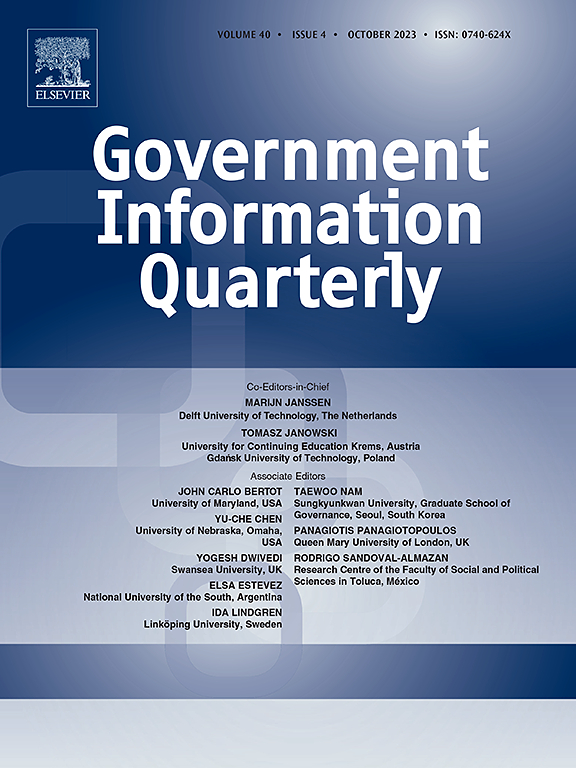联邦州数字公共服务的协调视角
IF 10
1区 管理学
Q1 INFORMATION SCIENCE & LIBRARY SCIENCE
引用次数: 0
摘要
在联邦制国家,公共服务的数字化尤其具有挑战性,部分原因是联邦结构通过权力划分和既定管辖权将组织分开,而数字化促进了社会与其组织之间的互联。联邦制国家的数字公共服务涉及的许多参与者需要协调,因此文献建议集中协调,以便联邦国家可以从单一制和联邦制国家的优势中受益。然而,这种方法尚未适应数字化,集中协调如何适用于数字公共服务仍不清楚。本文确定了联邦制国家的公共管理者应如何借助集中化来协调数字公共服务活动。由于协调取决于决策者是否愿意放弃他们的一些权力,我们也研究了联邦制国家的公共管理者用来影响决策者的机制。通过概念分析和对来自三个国家的28位公共管理者的访谈,我们得出了三种类型的协调——共享服务、数字身份和战略委员会,并确定了说服、激励、压力和经验的影响机制。在这样做的过程中,本文有助于识别协调类型的文献,它们的安排的设计原则,以及管理者通常用来影响决策者的机制。这三种类型的协调构成了一个新的理论视角,通过它来研究联邦结构对公共服务数字化的影响,而影响机制通过引入影响者的被动角色来扩展现有的工作。本文章由计算机程序翻译,如有差异,请以英文原文为准。
A coordination perspective on digital public services in federal states
The digitalization of public services is particularly challenging in federal states, in part because a federal structure separates organizations through a division of power and established jurisdictions, and digitalization facilitates interconnection between society and its organizations. The many actors involved in federal states' digital public services require coordination, so the literature suggests centralized coordination so federal states can benefit from the advantages of both unitary and federal states. However, this approach has not been adapted to digitalization and it remains unclear how centralized coordination applies to digital public services. This article determines how public managers in federal states should coordinate activities in digital public services with the help of centralization. Since coordination depends on decision-makers' being willing to give up some of their power, we also investigate the mechanisms that public managers in federal states use to influence decision-makers. Using a conceptual analysis and interviews with 28 public managers from three countries, we derive three types of coordination—shared services, digital identity, and strategic committee—and identify the influencing mechanisms of persuasion, incentive, pressure, and experience. In so doing, this article contributes to the literature in identifying the types of coordination, design principles for their arrangement, and the mechanisms managers typically use to influence decision-makers. The three types of coordination constitute a new theoretical lens through which to investigate the influence of the federal structure on the digitalization of public services, while the influencing mechanisms extend existing work by introducing the passive role of the influencer.
求助全文
通过发布文献求助,成功后即可免费获取论文全文。
去求助
来源期刊

Government Information Quarterly
INFORMATION SCIENCE & LIBRARY SCIENCE-
CiteScore
15.70
自引率
16.70%
发文量
106
期刊介绍:
Government Information Quarterly (GIQ) delves into the convergence of policy, information technology, government, and the public. It explores the impact of policies on government information flows, the role of technology in innovative government services, and the dynamic between citizens and governing bodies in the digital age. GIQ serves as a premier journal, disseminating high-quality research and insights that bridge the realms of policy, information technology, government, and public engagement.
 求助内容:
求助内容: 应助结果提醒方式:
应助结果提醒方式:


